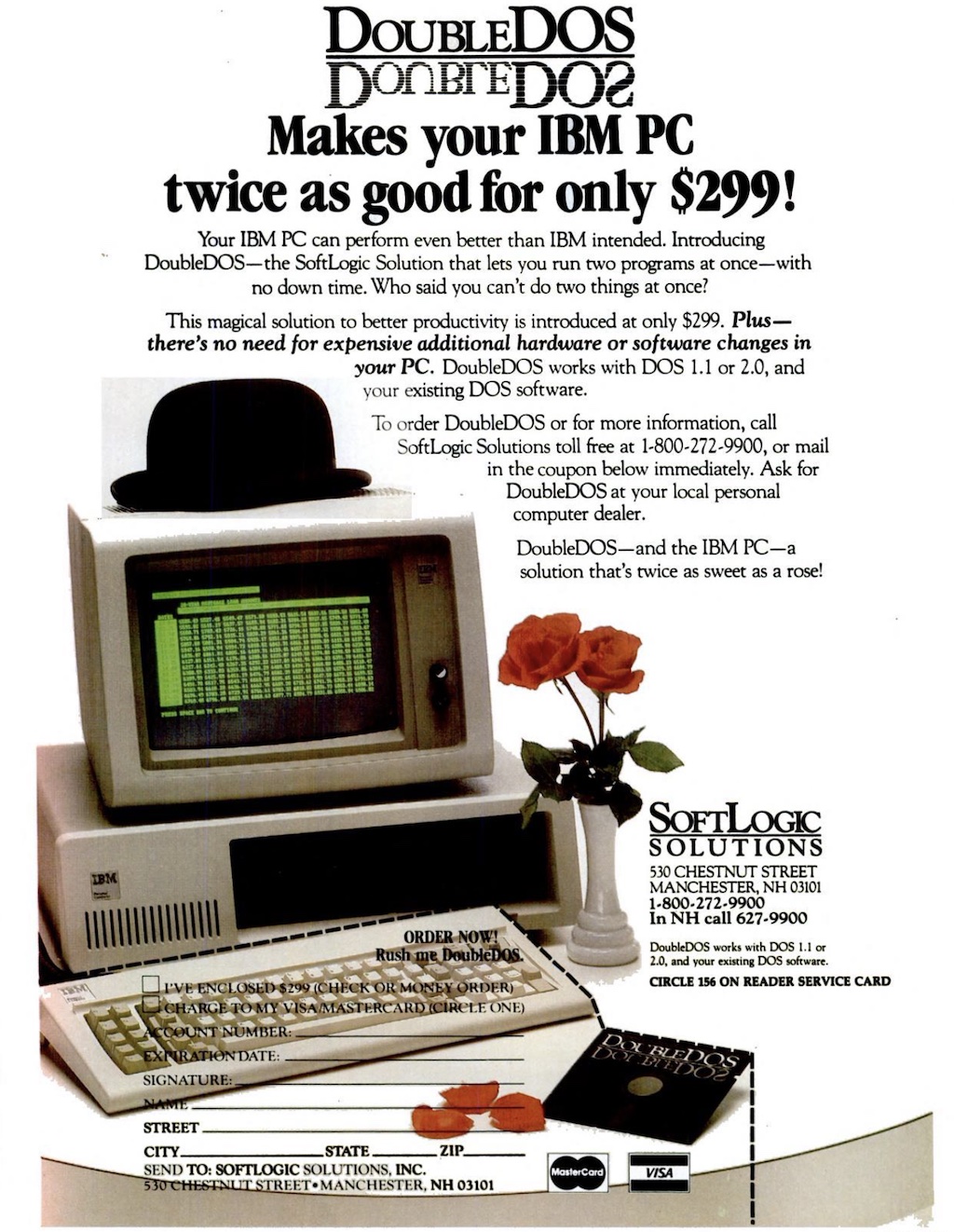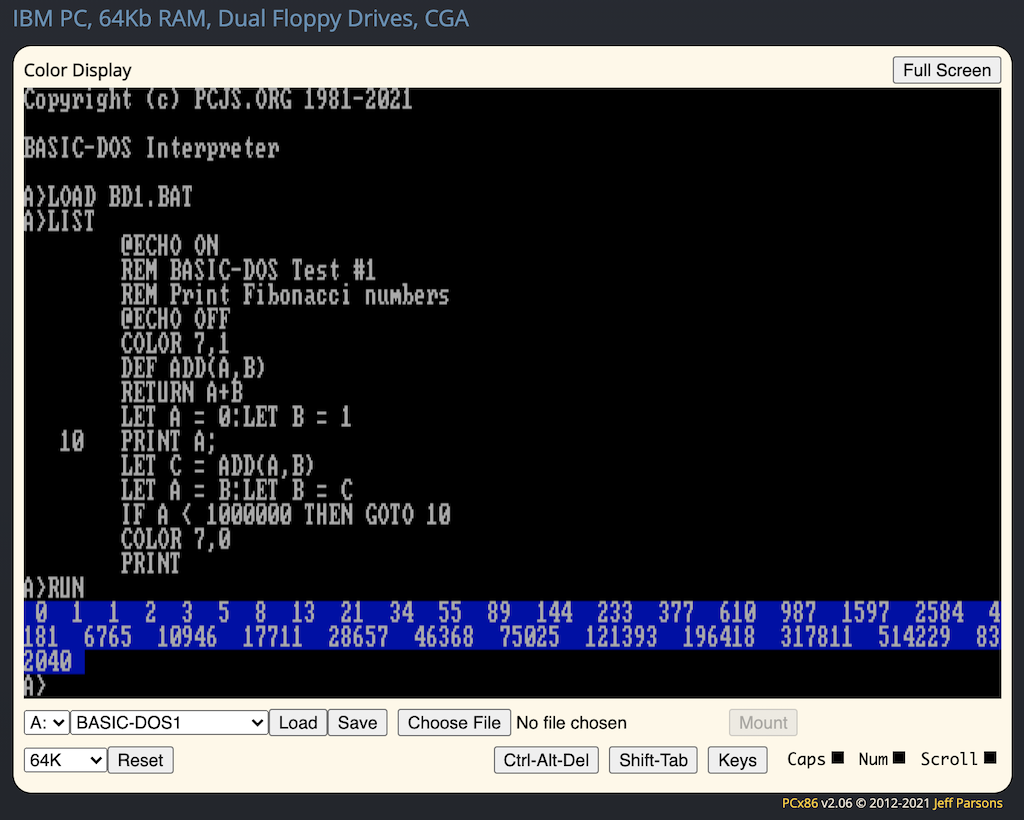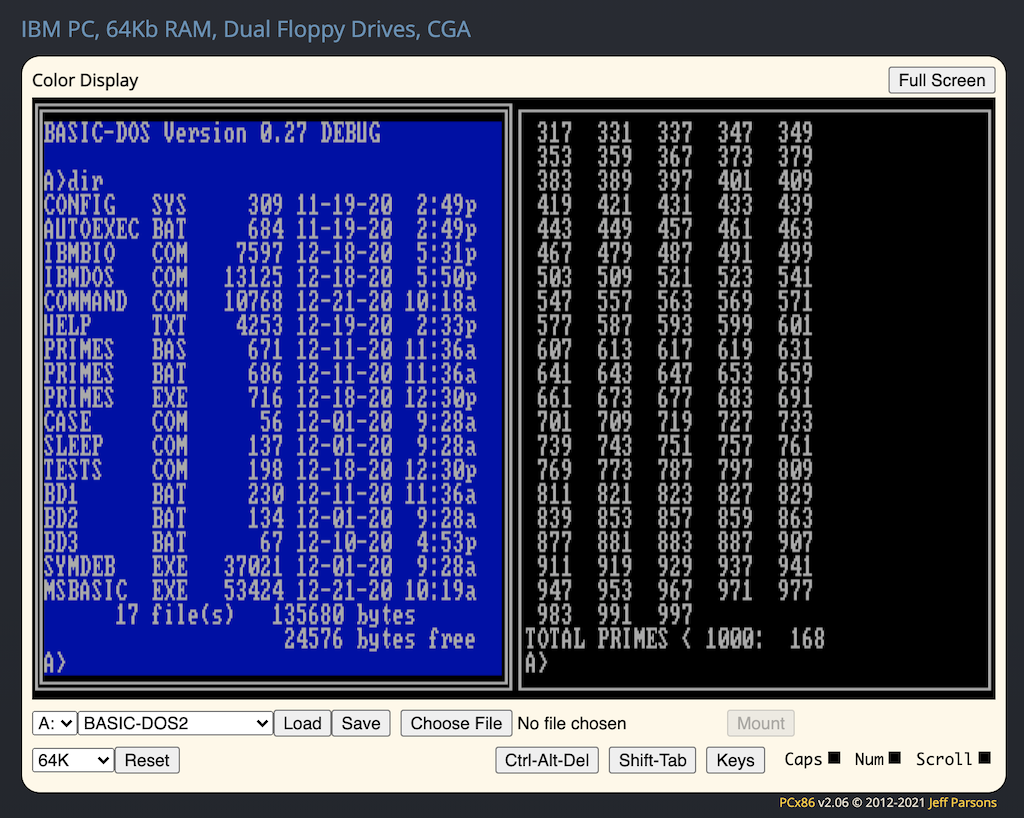PCjs Machines
Home of the original IBM PC emulator for browsers.

PCjs Blog
PC DOS Reimagined
Next year, on August 12, 2021, we’ll be celebrating the 40th anniversary of the IBM PC, a machine that put the world of personal computing on a path we’re still on today.
Granted, that path looks a lot different now, but if you open a Command Prompt on Windows, you can still
type a few of the commands that were introduced in PC DOS 1.00 (eg, DIR, COPY, TYPE), you can
still run batch (BAT) files, and you can even change the DATE and TIME just like you used to almost
40 years ago.
With PC DOS 1.00, Microsoft and IBM started down a road that could have forked in any number of directions at any point in time, so it was by no means inevitable that we’d always end up where we are now, but it’s also true that each new step was constrained in many ways by the previous step.
Each new version of DOS had to retain compatibility with the previous version, and old features could rarely be dropped, so the system inevitably grew. The need to rapidly add new features and turn around new versions, combined with compatibility constraints, meant that major architectural changes to DOS were extremely difficult.
In 1983, PC DOS 2.00 represented perhaps the most dramatic and successful overhaul of PC DOS ever, with the introduction of installable device drivers, a hierarchical file system, and a more powerful shell. Unfortunately, the shell missed an opportunity to embrace BASIC, choosing to simply mimic a few BASIC-like features instead, and the system still couldn’t make the leap to asynchronous I/O and true multitasking.
And multitasking was clearly something a lot of people wanted – even Microsoft. By late 1985, they had had some success running multiple DOS applications in other products, such as Microsoft Windows 1.01 and Multitasking MS-DOS 4.00. But they were unable (or perhaps unwilling) to add that feature to PC DOS.
As a result, a variety of third-party solutions emerged, like VisiCorp’s Visi On, IBM’s TopView, SoftLogic’s DoubleDOS and Software Carousel, and Quarterdeck’s Desqview.

But all those solutions felt like band-aids. As Michael J. Miller lamented in the August 11, 1986 issue of InfoWorld:
All these programs may just be interim solutions. Given the increasing
acceptance of 80286-based machines (the [IBM PC] AT and compatibles),
it's crazy that we have to resort to environments that get around a
single-tasking operating system. What we really need is a multitasking
operating system that addresses lots of memory. Hello, Microsoft?
By that time, Microsoft and IBM were already hard at work on OS/2, but OS/2 was an effort to move the world to an entirely new operating system, and it was a transition that ultimately proved too costly, both in terms of the required hardware and the sacrifices in DOS compatibility, and not enough people were willing to pay the price. Despite all the power of OS/2 1.x, it could still run only one DOS application at a time, and only when it was running full-screen.
Introducing BASIC-DOS
So over 40 years ago, if Microsoft and IBM had partnered just a little bit sooner, if they’d been able to predict how popular the platform would become, if they could have harnessed more of its power, and if Microsoft had been able to build more synergy between their flagship BASIC product and the underlying “Quick and Dirty” operating system, how dramatic could the impact have been?
It’s impossible to know with any certainty. However, what’s not impossible is creating that product today, and to see for ourselves what the IBM PC was really capable of from “Day One.”
And that was the inspiration for BASIC-DOS, a product (well, just a proof-of-concept at this point) that combines the power of BASIC with a multitasking DOS.
Read the BASIC-DOS Blog, check out the BASIC-DOS Preview, and see what you think.
As a product, yes, it’s completely out-dated. But as retro-programming projects go, it’s been a good one for 2020.
Jeff Parsons
Dec 22, 2020


